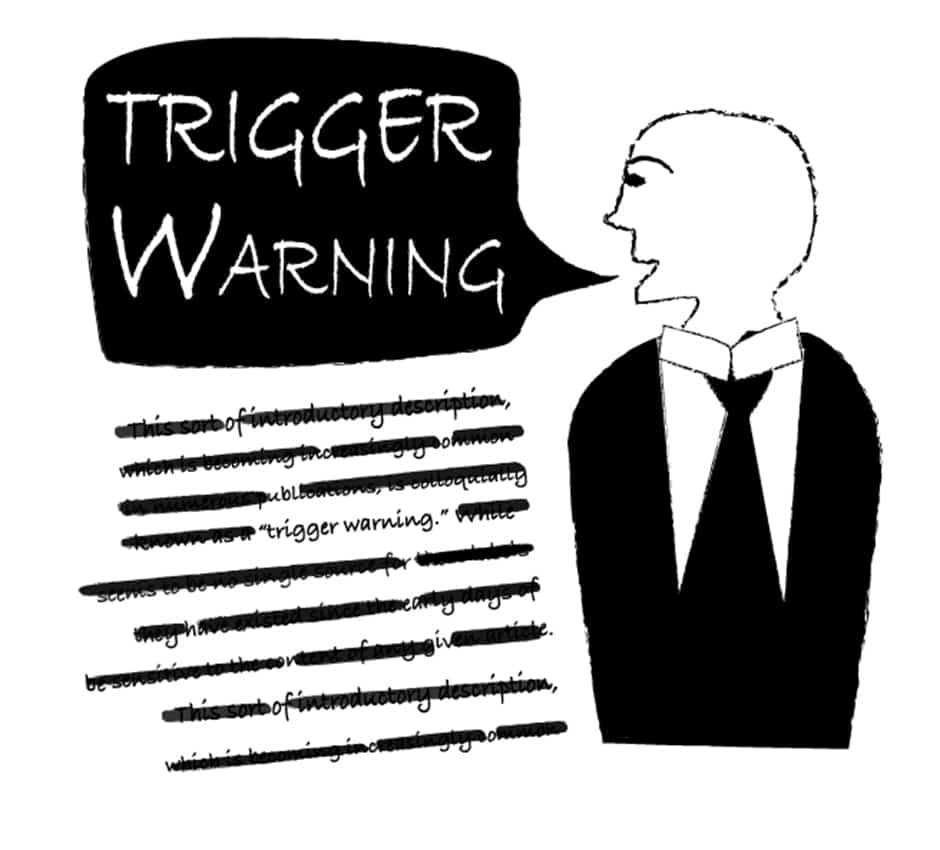An article published in last week’s issue of The Varsity opened with the following statement: “CONTENT WARNING: graphic description of sexual violence.”
This sort of introductory description, which is becoming increasingly common in numerous publications, is colloquially known as a “trigger warning.” While there seems to be no single source for these labels, they have existed since the early days of the Internet, created to warn readers who might be sensitive to the content of any given article.
In the aforementioned Varsity article, students shared their personal stories of sexual assault, many of which featured explicit and disturbing details. The purpose of the trigger warning, in this instance, is to warn readers who might have experienced sexual assault that the article contained “triggering” details, which could result in painful flashbacks, anxiety, or even self-harm.
Now, a case could be made that the subheading of the article, “Survivors and administrators share experiences with sexual assault,” would render such a warning unnecessary. Nonetheless, in an article that addresses personal accounts, which could be traumatic for victims of sexual assault, one can see the reasoning behind the notice.
Where trigger warnings become problematic, however, are in circumstances where we apply them too liberally.
Recently, The New Republic reported on student leaders at the University of California, Santa Barbara, passing a resolution to institute mandatory trigger warnings on class syllabi. The article in question goes on to cite a growing trend of students demanding trigger warnings in course materials on university campuses across North America. The article reads, “The trigger warning signals not only the growing precautionary approach to words and ideas in the university, but a wider cultural hypersensitivity to harm and a paranoia about giving offense.”
This statement addresses an important aspect of the trigger warning: once you start labeling things as troubling, where do you stop? “It’s not inconceivable that they’ll appear at the beginning of film screenings,” writes The New Republic’s Jenny Jarvie. “Will newspapers start applying warnings to articles about rape, murder, and war?”
In an article for The Washington Post author Wendy Kaminer questions the growing culture of political correctness on university campuses — one that includes discussions of the creation of “safe spaces” for students, which she describes as “[students] often talking about the threat of unwelcome speech and demanding protection from the emotional disturbances sparked by unsettling ideas.”
Such a quote encapsulates the problems that stem from widespread use of trigger warnings: by slapping “warnings” on information, we are constricting it and, implicitly, our understanding of it.
With this in mind, the trigger warning should stay safely within the space it was created. Personal accounts of distressing situations? Perhaps. Within academic institutions and the daily news? Absolutely not.
University campuses must remain places where ideas can be expressed openly — without fear of unpopularity or offense. Similarly, the job of news outlets is to provide, to the best of their abilities, an unbiased and factually accurate account of the day’s events. In doing so, they should not and must not filter, censor, or limit, in any way, the information they are tasked with sharing.
This seemingly inevitable spread of the trigger warning, while undoubtedly well intentioned, is troubling in that it creates a society in which we are constantly thought of as “easily upset;” perhaps one in which we are not given the full scope of an idea, for fear of offense. We aren’t given the bottom line, but instead we are given the one more easily walked; instead of the pill we need, the one that’s easiest to swallow.
It is inevitable that there will be people who choose not to interact with relevant news and ideas. Yet, this is not behaviour that should be catered to, or facilitated. The world can be a cruel, upsetting place. Both journalism and academia strive, in their own separate ways, to hold those who make it so to account. There are no trigger warnings in real life and there should be none in the discussion and reporting of it.
Sarah Niedoba is The Varsity’s Arts and Culture Editor. She is a fourth-year student at Victoria College studying English.


